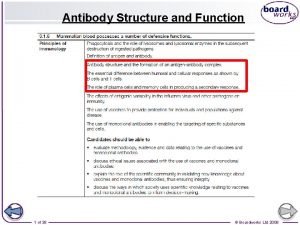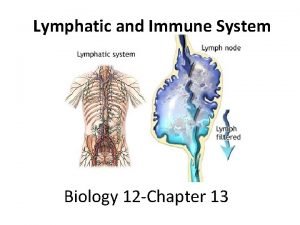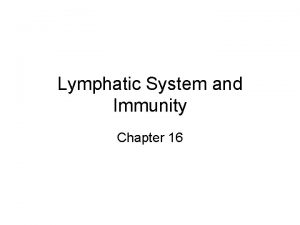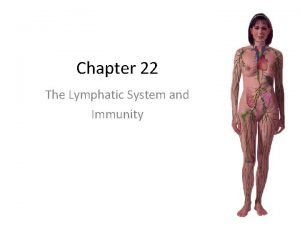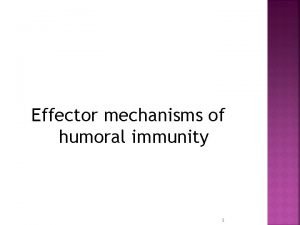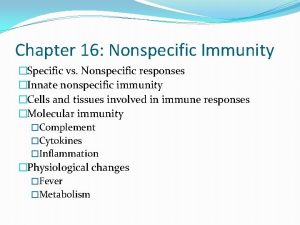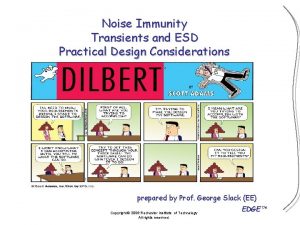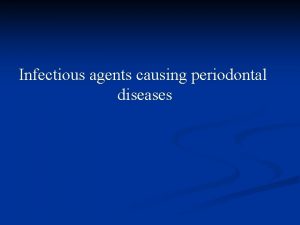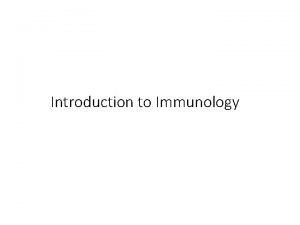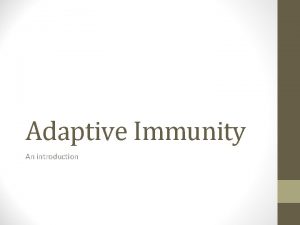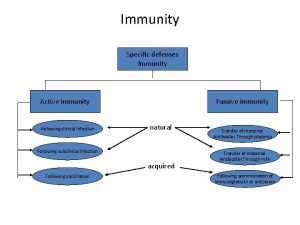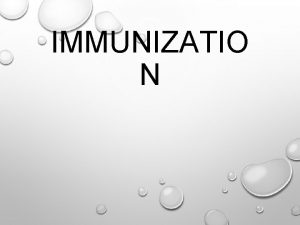IMMUNITY AND PERIODONTAL DISEASES 1 Protective and destructive











- Slides: 11

IMMUNITY AND PERIODONTAL DISEASES 1

Protective and destructive aspects of immunity: 2

Protective effect : 1 – Opsinization of microorganisms or phagocytosis by polymorph nuclear cells and macrophages. 2 – Attraction of phagocytes. 3 – Phagocyte receptor site binding of immune complexes that have complement activation and phagocytosis. 4 – Chemotaxis activity of the fragment C 3 a & C 5 a of complement system. 5 – Complement activation by antibody – antigen complex. 3

Destructive effects : 1 – Anaphylactic action of C 5 a fragment of complement that release histamine. 2 – Cleavage fragment C 3 a which is cytotoxic for macrophages. 3 – Release of lysosomal hydrolases. 4

Significant immune findings associated with periodontal diseases: Periodontal disease Immunologic findings PMN chemotactic defect antibody titer to Bacteriod intermedius and spirochetes ANUG Adult Periodontitis Elevated Ab. Titer to B. gingivalis and other Periodontopathogens Occurrence of immune complexes in gingival tissues. LJP PMN GJP PMN chemotactic defect and depressed phagocytosis. Elevated Ab. Levels of A. a. chemotactic defect. phagocytosis. Depressed Pre pubertal Periodontitis Rapidly Progressive Periodontitis Desequamative gingivitis Pregnancy gingivitis Refractory periodontal diseases PMN & Monocyte chemotactic defect. Suppressed or enhanced PMN or Monocyte Chemotaxis. Elevated Ab titer to several types of gingival bacteria. Characteristic No immunopathologic changes in most cases. immunologic findings. Reduced PMN Chemotaxis. 5

Components of the immune system affecting Periodontal diseases: Immune component Effect on PD. Secretary immune system decreased bacterial colonization on surface exposed to saliva Neutrophiles, Ab & Complement Bactericidal Lymphocyte, macrophage Tissue destruction Lymphokines immunoregulatory system Control immune Responses to bacteria 6

Influence of host response on different aspects of periodontal diseases: Aspect of disease Host factors Bacterial colonization Sub gingival, Ab & Complement in GCF inhibits adherence & aggregation of Bacteria & potentially reduces their number by lyses. Bacterial invasion Ab & C- mediated lyses reduced bacterial counts. Also neutrophiles (Chemotaxis & phagocytosis) reduced bacterial counts. Tissue destruction Ab-mediated hypersensitivity & cell mediated immune reaction lead to activation of Tissue factors as collagenase. Healing + fibrosis Lymphocytes & Macrophage produced chemotactic factors for fibroblasts lead to fibroblasts activating factor 7

Neutrophiles and Periodontal disease 8

1 - Diseases with Neutrophiles disorders that associated with periodontal disease: 1 – Diabetes mellitus. 2 – Down syndrome. 3 – Drug induced agranulocytosis. 4 – Cyclic neutropenia. 5 – Papillion levevre syndrome. 9

2 - Periodontal diseases associated with neutrophiles disorders: 1– 2– 3– 4– 5– ANUG. Pre Pubertal Periodontitis. Rapidly Progressive Periodontitis. Localized Juvenile Periodontitis. Refractory Periodontitis. 10

11
 Difference between acquired immunity and innate immunity
Difference between acquired immunity and innate immunity Humoral and cell mediated immunity difference
Humoral and cell mediated immunity difference Chapter 13 lymphatic system and immunity
Chapter 13 lymphatic system and immunity Immunity assignment slideshare
Immunity assignment slideshare Chapter 16 lymphatic system and immunity
Chapter 16 lymphatic system and immunity Lymphatic system is composed of
Lymphatic system is composed of Active artificial immunity
Active artificial immunity Effector mechanism of humoral immunity
Effector mechanism of humoral immunity Nonspecific vs specific immunity
Nonspecific vs specific immunity When was canra passed
When was canra passed Adaptive noise immunity
Adaptive noise immunity Keva immunity booster
Keva immunity booster

